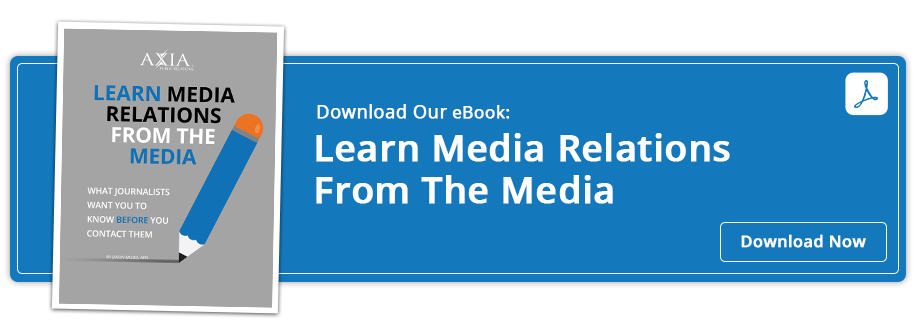 Journalists typically have 2 basic questions. Learn how to answer them for media success
Journalists typically have 2 basic questions. Learn how to answer them for media success
Your company has a great story to tell. Perhaps you even have a new product or initiative that you believe will change the future of your industry. If you’re like most, you send email pitches to numerous journalists, hoping they will be interested enough to write about your news.
And then nothing happens.
Other companies seem to get tons of media coverage, but not yours. What gives? The problem may be that your pitches are turning reporters off because they don’t answer two basic questions the right way. Once you understand what journalists really want, your media relations results will improve.
We count on journalists to inform, educate and entertain us. Still, ultimately, a reporter’s job is to write articles or produce stories that will increase readership, viewers, likes and profits. In order to do that, they are only interested in ideas that their particular audiences will favor.
In short, you must answer these questions:
- Why are you contacting me about this issue?
To be effective, you must pay attention to the following details:
Your subject line is crucial.
This is what determines whether the reporter will even open the email to see what’s inside. It should be creative, smart and compelling. Strive for 10 words or less. Research shows that a one-word subject line gets the most engagement and using no subject line at all can also be effective (seriously!). Avoid terms like press release or interview opportunity.
The straightforward approach is always preferable.
Don’t deviate from your initial subject and be honest. Using exciting phrases in your subject that don’t really apply to the rest of your email may get a journalist to open your message, but this will backfire. Subject lines with exaggerations or untruths, like “X company grows 500 percent in one day” or “Breaking news: thousands hurt in accident downtown” are a mistake. It’s called click-bait and may cause a journalist to permanently block any further emails from you.
Don’t include unexpected attachments.
In fact, this may be the number one reason your email pitch gets sent to the spam folders. Also, it makes many reporters suspicious.
- Why will my readers/viewers care about your news?
To answer this, your email pitches must:
Be targeted.
Mass-produced email pitches don’t work. If it looks like any old reporter could write the story, journalists probably won’t touch it. Make sure your email is addressed to a specific individual. Also, do your homework and find the right reporter.
Be relevant.
Old, recycled news won’t cut it. Neither will puff pieces and non-news. For example, while you might think it’s great that your company is hosting a dinner for all your vice presidents, this is not the kind of story likely to attract a wide audience.
Be concise.
Don’t bury the lead. In other words, filling your email message with a lot of data and quotes before getting to the meat of the story will cause the journalist to quickly hit delete. An email pitch should be no longer than three sentences. You only have about 10 seconds to capture his curiosity, so make it count.
Be actionable.
Without a strong call to action, your email pitch will die on arrival. Make sure you tell the reporter what you want her to do at the conclusion of your message. This may include conducting an interview, attending a trade show, taking a tour of your facilities or writing a story.
Be smart.
Hire a public relations firm to help you. Generating buzz through an email pitch takes timing, talent and patience. With help from a PR firm, you can accomplish your media relations goals faster.
There is lots of competition for media attention, and at Axia Public Relations, we work to make your company stand out above the rest. We will help you craft your email pitches to strengthen your credibility and earn positive news coverage. To find out more, contact us or download our e-book Learn Media Relations from the Media.

 Lisa Goldsberry is a senior blogger for Axia Public Relations with more than 15 years of public relations experience. She specializes in business and technology PR. Lisa has worked for Axia since December 2013. Learn more about Lisa Goldsberry. Connect with Axia on Twitter @axiapr or tell us what you think in the comments below.
Lisa Goldsberry is a senior blogger for Axia Public Relations with more than 15 years of public relations experience. She specializes in business and technology PR. Lisa has worked for Axia since December 2013. Learn more about Lisa Goldsberry. Connect with Axia on Twitter @axiapr or tell us what you think in the comments below.
Featured image credit: 123rf.com
Topics: media relations, public companies

Comment on This Article